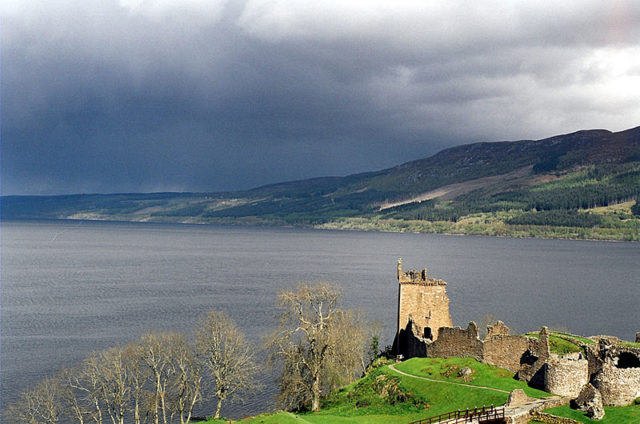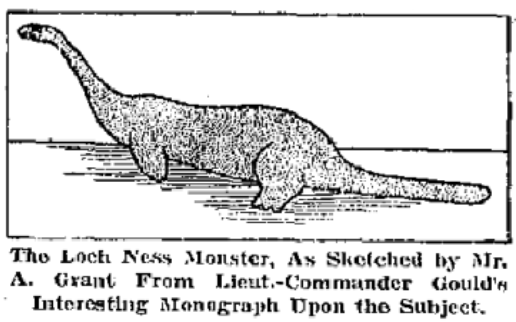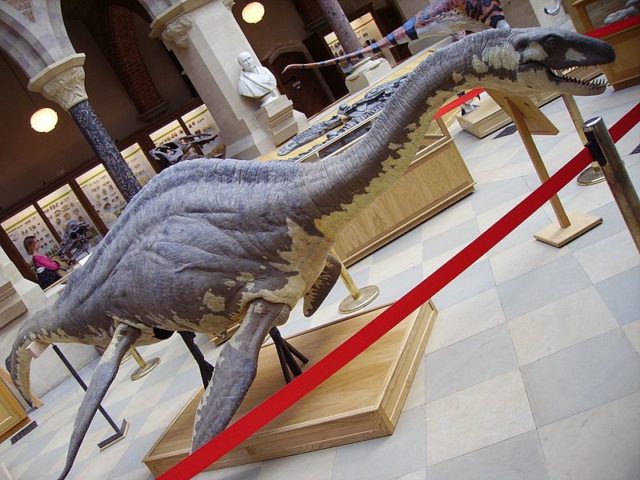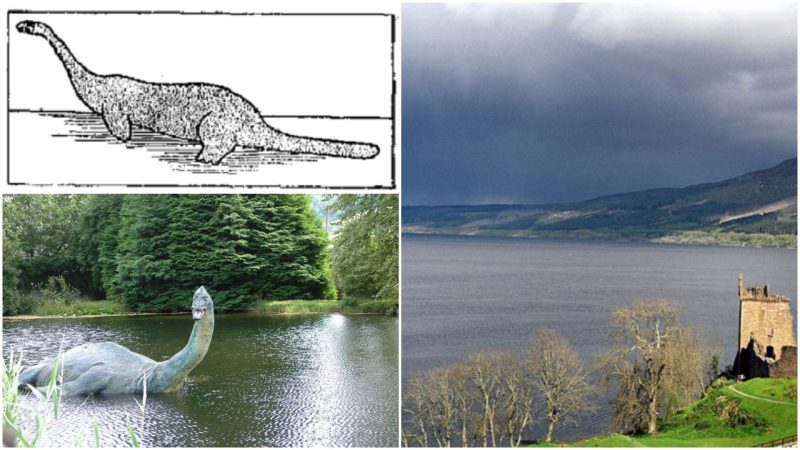There are three lakes that comprise the Great Glen in the Scottish Highlands, Oich, Ness, and Lochy, known as lochs in the Scottish, Irish, and Scottish Gaelic languages. Loch Ness is the world-famous one because of a certain monster–or perhaps a dinosaur that time forgot–who supposedly lives in its cold waters, surfacing for a bit of air and to be photographed by ecstatic tourists before plunging back down again, into a body of water deeper than the North Sea.
The first record of a strange creature in the loch dates back to many centuries before the invention of the video recorder. It was actually the 6th century when an Irish saint, St. Columba, gave an order to one of his monks to swim across the lake to get a boat. According to the story, while the monk was but halfway across the lake, a monster appeared and headed for the swimmer. Columba shouted to the monster to go no further, to not touch the man and to return to the deep. And the monster did so.
After this, Nessie sightings trickled out over the years. It’s interesting that Nessie never harms anyone. The lingering effect of St. Columba, perhaps?

The Loch Ness Monster became especially popular during the 20th century when it became almost commonplace for the locals to spot it. This, of course, has had a great effect on local business. It was 1933 when the first photograph claiming to be of the monster appeared. A surgeon from London took it, and it showed a long neck extending from a thick body. The picture, published in the Daily Mail, soon became a sensation. It’s too bad the photograph has since been shown to be an elaborate hoax.
Around the time that the picture was published, a circus owner named Bertram Mills who was traveling to Inverness stopped at Loch Ness to rest his animals and let them drink from the loch. With an idea that he might cage the beast, he offered a reward of £20,000 (the equivalent of $2.6 million today) to anyone who could catch the monster for his circus. Nobody did. But the reward made the loch quite an attraction and the number of sightings shot up. Many people came to the loch hoping to capture the animal, or at least take a photo of it. It has been remarked how the head and neck of Nessie resemble a swimming elephant. However, even an escaped elephant couldn’t explain every sighting of Nessie.

In 1951, another photo of the monster was shot by a forestry worker, Lachlan Stuart, who lived close to the loch. According to his story, Stuart saw three humps appearing in a line in the water, and he immediately ran to his house and got his camera. He took only one photo before the shutter jammed, but it was worth as it got into the media and satisfied the curiosity of some that Nessie really exists.

Nessie sparked the interest of people. In the following years, there were even a few scientific investigations into the lake. The Loch Ness Phenomena Investigation Bureau was established in 1961. There have been a number of sonar searches of the loch over the years, the first in 1967-8. The most thorough sonar research was Operation Deepscan in 1987. As with previous such operations, the results were inconclusive; however, in 2011 a fishing skipper produced a sonar image of an object 4.9 feet wide that he said kept pace with his boat. During the dive of the Pisces submarine, at a depth of 950 feet, the crew found a vast underwater cave.
Assuming that Nessie was a male (because aren’t all monsters), in the 1970s a group of firemen created a papier-mâché version, 309 feet long, in the shape of a “lady monster,” to lure Nessie out of his hiding place. Oh, the lady monster was prepped for a date: she even had makeup and eyelashes, and emitted a pre-recorded mating call. But Nessie didn’t come out, and the lady monster was destroyed in the water. Nessie did nothing to save her. It turned out the mating call was that of an amorous walrus. Which explains the no-show.

Nobody ever proved the existence of a monster in Loch Ness. But neither has somebody proved that Nessie isn’t there. And on top of everything, there have been reports about similar creatures from different lochs in the West Highlands.
Read another story from us: A brief history of a few Scottish clans
Nessie remains an enduring mystery, and every now and then he is still spotted. Tourists keep capturing the Loch Ness Monster, and now their videos show up on YouTube. The number of views always shoot up in no time.
